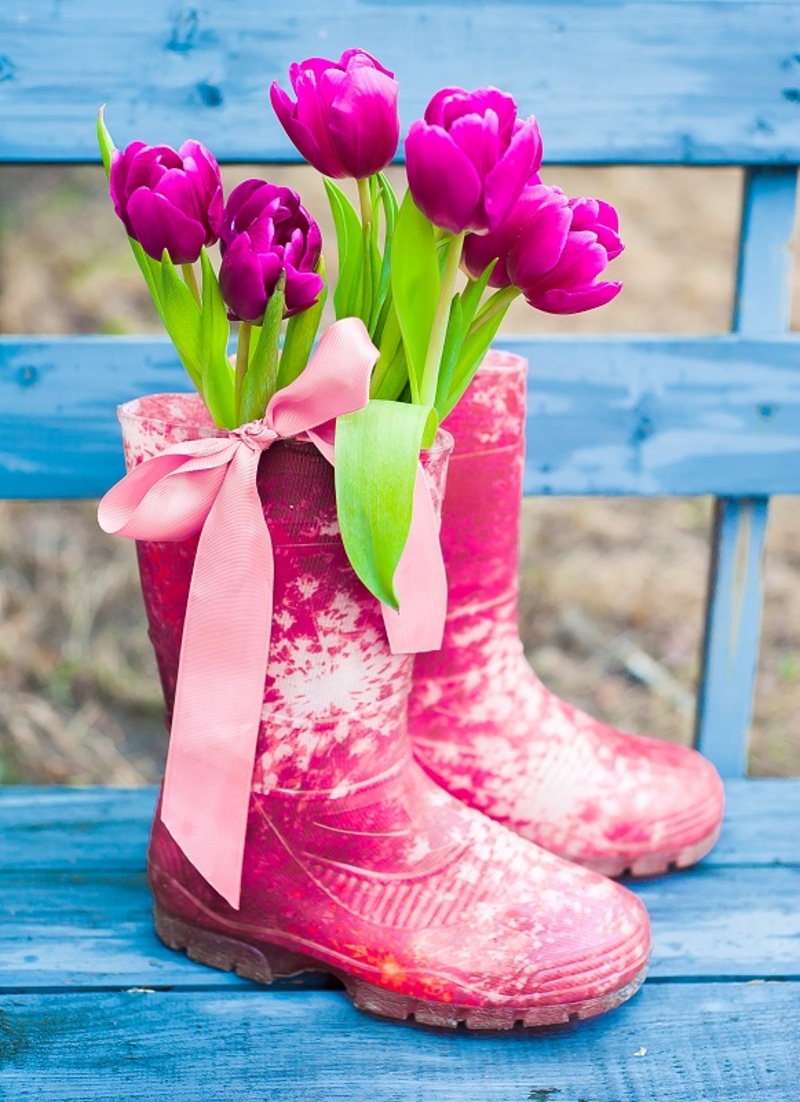Exploring the Symbolism of Your Birth Flower
Posted on 18/08/2025
Exploring the Symbolism of Your Birth Flower: A Journey Through Nature’s Timeless Language
Flowers have captured human hearts for centuries with their vibrant beauty, intricate fragrances, and captivating forms. But beyond their surface appeal lies a deeper significance: flowers are powerful symbols that convey messages, emotions, and cultural meanings. Among the most fascinating of these floral emblems are birth flowers--unique blossoms assigned to each month of the year, much like zodiac signs. Exploring the symbolism of your birth flower offers insights not only into your own personality and destiny, but also weaves you into the rich tapestry of global traditions and folklore.

What is a Birth Flower?
The concept of birth flowers traces its roots to ancient traditions, where specific flowers were linked to each month or astrological sign. Just as gemstones are assigned to birth months, each birth month flower brings its unique flair and meaning. In many cultures, these flowers are believed to bestow special qualities upon those born during their month, offering a floral representation of an individual's character and fate.
Why Are Birth Flowers Significant?
From birthday bouquets to poetic references, birth month flowers play a prominent role in our lives. Their symbolism is pervasive in art, literature, and rituals. Gifted as tokens for birthdays and milestones, they offer a personal and meaningful gesture. But what does your birth flower actually reveal about you?
The Birth Flowers and Their Meanings by Month
Let’s dive deeply into exploring each monthly birth flower and its symbolism. Whether you’re seeking to understand your own, or searching for a thoughtful gift, knowing these meanings will enrich your appreciation for nature’s hidden language.
January: Carnation & Snowdrop
- Carnation: A flower famed for its ruffled petals and rich hues, the carnation symbolizes love, fascination, and distinction. In some cultures, it is linked to gratitude and admiration. Its enduring nature in winter embodies strength and resilience.
- Snowdrop: Emerging through snow, the delicate snowdrop is a vivid emblem of hope and renewal. It speaks to purity, innocence, and the promise of brighter days ahead after winter’s darkness.
February: Violet & Primrose
- Violet: Violets signify faithfulness, modesty, and affection. The purple hue has royal connotations, while the flower’s discreet beauty celebrates the value of humility.
- Primrose: Often interpreted as a symbol of youth and new beginnings, the primrose also represents undying love. The message: “I can’t live without you.”
March: Daffodil
- Daffodil: Bursting forth with the arrival of spring, daffodils symbolize rebirth and new beginnings. They are often associated with hope, renewal, and joy.
April: Daisy & Sweet Pea
- Daisy: The cheerful daisy embodies innocence, purity, and true love. Its simple beauty is a reminder to keep life uncomplicated and sincere.
- Sweet Pea: Known for its delightful fragrance, the sweet pea expresses gratitude, pleasure, and delicate pleasure--often given to convey appreciation or farewell.
May: Lily of the Valley & Hawthorn
- Lily of the Valley: Symbolizes humility, sweetness, and the return of happiness. With its dainty bell-shaped flowers, it is also connected to luck in love and happiness in the future.
- Hawthorn: Associated with hope, supreme happiness, and protection. The hawthorn is a traditional emblem of spring festivals and new, vital energy.
June: Rose & Honeysuckle
- Rose: Revered across cultures, the rose signifies love, passion, and beauty. Its color carries additional symbolism--red for romance, white for purity, yellow for friendship.
- Honeysuckle: Represents devoted affection and bonds of love. Its sweet scent symbolizes the joys of loving and being loved.
July: Larkspur & Water Lily
- Larkspur: Vibrant and joyful, larkspur embodies lightness of spirit, open heart, and loyalty. Its towering spires usher in an optimistic message.
- Water Lily: Emerging serenely from still water, the water lily speaks of purity of heart, enlightenment, and rebirth--a symbol cherished in many Eastern traditions.
August: Gladiolus & Poppy
- Gladiolus: The sword-shaped leaves of gladiolus hint at strength, integrity, and remembrance. This striking flower also expresses infatuation and sincerity.
- Poppy: Represents imagination, consolation, and remembrance. Red poppies, in particular, are internationally recognized symbols of remembrance for fallen soldiers.
September: Aster & Morning Glory
- Aster: Named after the Greek word for “star,” asters symbolize wisdom, faith, and valor. They are also associated with patience and a sense of mystery.
- Morning Glory: This climbing flower represents affection, love, and mortality, blossoming in the morning sun and fading by day’s end--reminding us of the fleeting beauty of life.
October: Marigold & Cosmos
- Marigold: With its fiery gold tones, the marigold is a symbol of passion, creativity, and a fierce drive. In some cultures, it represents remembrance and honoring the dead.
- Cosmos: This flower stands for order, harmony, and tranquility, reflecting the balanced beauty of the universe in its petals.
November: Chrysanthemum
- Chrysanthemum: Celebrated in many Eastern cultures, chrysanthemums represent longevity, joy, and fidelity. In the language of flowers, they convey friendship and well-wishing.
December: Narcissus & Holly
- Narcissus: Also called the paperwhite, narcissus stands for hope, respect, and rebirth. It brings good wishes and optimism for the year ahead.
- Holly: Evergreen and radiant with red berries, holly represents protection, unyielding spirit, and joy. It is revered as a symbol of peace and festive celebration.
How to Discover Your Birth Flower’s Meaning in Your Life
Exploring the symbolism of your birth month flower involves more than knowing which blossom represents you. It’s about interpreting its message and discovering how it reflects your inner qualities and life journey. Here are some ways to integrate your birth flower symbolism into your daily existence:
- Personal Reflection: Consider your birth flower's characteristics. Do you see its qualities in yourself or your experiences?
- Decorative Choices: Use your birth flower in home decor, from fresh arrangements to artwork, to inspire harmony and positivity.
- Gift-Giving: Personalize gifts--bouquets, cards, jewelry--with the recipient's birth flower for added meaning.
- Celebration Practices: Incorporate your birth flower into birthday rituals or ceremonies, strengthening your connection to your heritage and nature.
- Spiritual Exploration: Meditate on your birth flower’s symbolism; some find comfort and guidance in aligning with its unique vibration.
Birth Flower Symbolism Around the World
Birth flowers are more than Western inventions; their significance can be found in diverse global customs. In Japan, for example, the practice of Hanakotoba--the language of flowers--attributes symbolic meanings to countless native blooms, shaping social etiquette. In Victorian England, people exchanged floriography messages, revealing feelings indirectly.
Some cultures regard certain birth month flowers as protective talismans for newborns, while others believe they bring good fortune or ward off negativity. Examining your birth flower's meaning through a multicultural lens deepens understanding and appreciation.
Frequently Asked Questions about Exploring Your Birth Flower Symbolism
Can I Have More Than One Birth Flower?
Yes! Some months are represented by multiple flowers, reflecting regional variations and evolving traditions. Embrace all the flowers linked to your birth month and discover which resonates most with your spirit.
What if I Don't Like My Birth Flower?
Not feeling a bond with your designated bloom? That's okay. Birth flower symbolism is a guide, not a rule. You can align with any flower that speaks to your heart and aspiration.
How Are Birth Flowers Chosen?
The selection of birth month flowers is rooted in a blend of seasonal, astrological, and cultural factors. For example, flowers that bloom during a certain month became symbolic of that time, while folklore and mythology layered on additional meaning.
Are Birth Flowers and Birthstones Related?
Both connect you to your month of birth, but they arise from different traditions--one botanical, the other mineralogical. Together, they offer a holistic way to honor your uniqueness.

Conclusion: Embrace the Timeless Wisdom of Your Birth Flower
The symbolism of your birth flower opens a window to self-discovery and connection, blending the beauty of nature with centuries of cultural tradition. Whether used to reflect on your life’s journey, enrich relationships, or simply decorate with intention, your birth month flower whispers a message meant just for you.
By exploring the symbolism of your birth flower, you celebrate a timeless tradition--and invite the wisdom of nature and heritage into your daily life. Next time you see your special bloom, remember: its petals carry a story as unique and beautiful as your own.
Resources for Further Exploration
- Visit local botanical gardens to see your birth flower in person and learn more from expert guides.
- Explore books on the language of flowers and floral symbolism.
- Discover how artists, poets, and spiritual leaders use birth flowers in their work--draw inspiration for your own creativity!
Start your own journey today--plant the seeds of meaning, beauty, and connection by exploring the symbolism of your birth flower!
Latest Posts
Exploring the Symbolism of Your Birth Flower
3 Simple Strategies to Sustain Your Flowers' Vibrancy
The Quintessential 5 Flowers for a Memorable Valentine's Day





